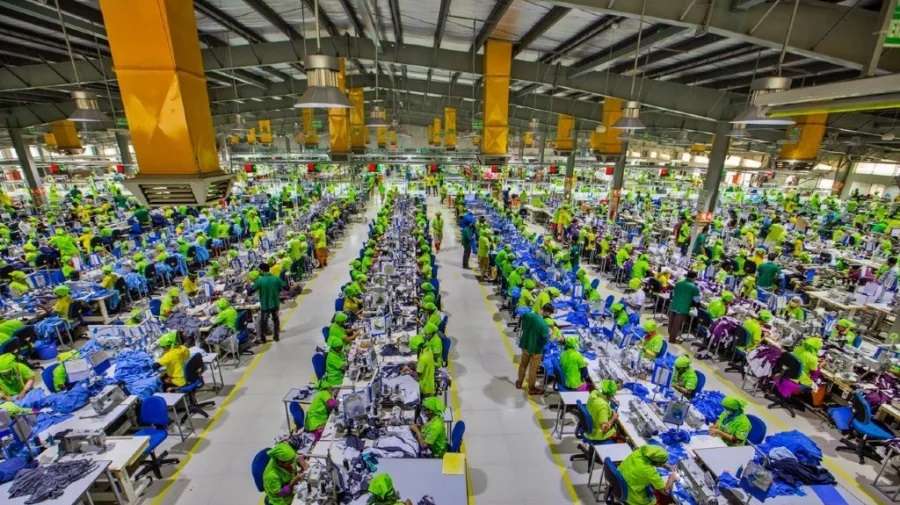"To keep up to the sustainable promise, apparel companies need to invest in finding cotton alternatives. These solutions need to be holistic and intentional, designed to alter the status quo, points out Anita Chester, Head of Sustainable Raw Materials at C&A Foundation. For her, collaboration is the key. Talking about the challenging scenario, she says most fibres in the materials mix of the fashion industry have environmental and social impacts. Viscose is associated with deforestation and chemicals in its processing. Synthetic fibres require less water and land than cellulose fibres, but their production is based on fossil fuels and is energy intensive. In addition, these fibres are non-biodegradable and shed plastic microfibres. A big challenge is waste. Three-quarters of all used material processed along the fashion value chain are lost in landfills. Less than 1 per cent of all materials in clothes are recycled into new garments."
 To keep up to the sustainable promise, apparel companies need to invest in finding cotton alternatives. These solutions need to be holistic and intentional, designed to alter the status quo, points out Anita Chester, Head of Sustainable Raw Materials at C&A Foundation. For her, collaboration is the key. Talking about the challenging scenario, she says most fibres in the materials mix of the fashion industry have environmental and social impacts. Viscose is associated with deforestation and chemicals in its processing. Synthetic fibres require less water and land than cellulose fibres, but their production is based on fossil fuels and is energy intensive. In addition, these fibres are non-biodegradable and shed plastic microfibres. A big challenge is waste. Three-quarters of all used material processed along the fashion value chain are lost in landfills. Less than 1 per cent of all materials in clothes are recycled into new garments.
To keep up to the sustainable promise, apparel companies need to invest in finding cotton alternatives. These solutions need to be holistic and intentional, designed to alter the status quo, points out Anita Chester, Head of Sustainable Raw Materials at C&A Foundation. For her, collaboration is the key. Talking about the challenging scenario, she says most fibres in the materials mix of the fashion industry have environmental and social impacts. Viscose is associated with deforestation and chemicals in its processing. Synthetic fibres require less water and land than cellulose fibres, but their production is based on fossil fuels and is energy intensive. In addition, these fibres are non-biodegradable and shed plastic microfibres. A big challenge is waste. Three-quarters of all used material processed along the fashion value chain are lost in landfills. Less than 1 per cent of all materials in clothes are recycled into new garments.
Speaking on cotton expanse, she says cotton represents over 90 per cent of plant-based fibres in the industry and is a widely grown crop in over 80 countries. It is also an input-intensive crop. When grown conventionally, it consumes huge amount of pesticides, herbicides, and water. Although it doesn’t compare with input-intensive chemical farming for yields, organic cotton cultivation does have substantially lower input costs that can largely benefit farmers. But organic cotton accounts for less than 1 per cent of the global cotton production. Its cultivation faces unique, deeply rooted challenges that prevent it from being widely adopted. With a view to enhance cotton production, C&A Foundation is working with over 40,000 farmers in five countries to help them transition to organic practices.
Addressing the challenge
In 2017, C&A brought the first gold level Cradle-to-Cradle Certified products to market in stores across Europe, Brazil, and Mexico. C&A has also expanded the Cradle-to-Cradle Certified collection from ladies to include men, kids, and teens. Following its successful launch in the Netherlands, C&A rolled out the in-store take-back program to four additional retail markets: Belgium, Luxembourg, Switzerland, and a pilot in Brazil. Ikea met their 100 per cent sustainable cotton goals some years back, and their 2030 commitment includes designing all Ikea products with circular principles using only renewable and recycled materials. Adidas and Parley continue to raise awareness about ocean plastic pollution. Their creative footwear solutions utilise Parley Ocean Plastic, a proprietary textile made from recycled plastic retrieved from oceans, proving that footwear companies are able to adopt sustainable manufacturing practices at scale.
expanded the Cradle-to-Cradle Certified collection from ladies to include men, kids, and teens. Following its successful launch in the Netherlands, C&A rolled out the in-store take-back program to four additional retail markets: Belgium, Luxembourg, Switzerland, and a pilot in Brazil. Ikea met their 100 per cent sustainable cotton goals some years back, and their 2030 commitment includes designing all Ikea products with circular principles using only renewable and recycled materials. Adidas and Parley continue to raise awareness about ocean plastic pollution. Their creative footwear solutions utilise Parley Ocean Plastic, a proprietary textile made from recycled plastic retrieved from oceans, proving that footwear companies are able to adopt sustainable manufacturing practices at scale.
Switching to eco materials
Brands have started future-proofing their business with an aim to expand eco horizons. Brands know it for a fact that consumptive behaviour is largely fuelled by affordable fast fashion, and yet leaders have shown that innovative business models like Mud Jeans, where fashion is leased, can also work without depleting finite resources. The North Face Renewed, which just launched in June, is a collection of products sourced from returns or defective items, cleaned and repaired to the quality of a new piece of clothing, and then sold online at a discount. This is a great example of future circular business models where companies continue to earn revenue while keeping material value in the system.
Chester says change is always slow but yes there will be a shift around raw materials that are restorative and regenerative. Growing consumer awareness on issues of pollution and climate change have a major impact. Businesses will have no choice but to speak the language of the millennial shopper and act accordingly going forward.












